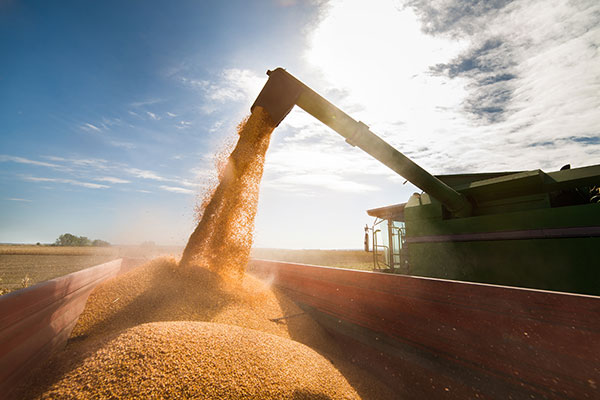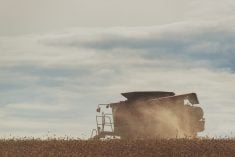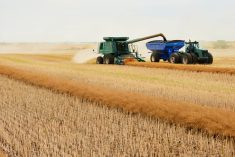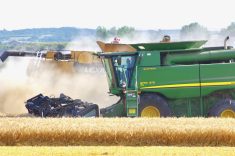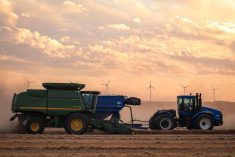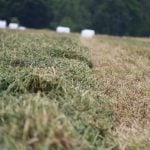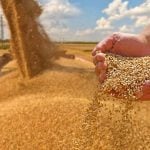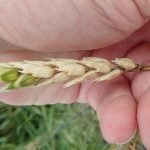Glacier FarmMedia — Heavy rainfall in some areas failed to halt harvest operations in Manitoba during the week ended Aug. 24.
Manitoba’s growers completed 10 per cent of the harvest, compared to four per cent one week earlier, according to the province’s weekly crop report released on Aug. 26. The central region’s harvest was 16 per cent finished while the northwest was at four per cent.
Winter wheat and fall rye were 85 per cent combined, followed by field peas at 65 per cent. Barley was 20 per cent complete, while spring wheat was at 18 per cent, oats were at 10 per cent and canola was at one per cent with its harvest starting in the central and eastern regions.
Read Also
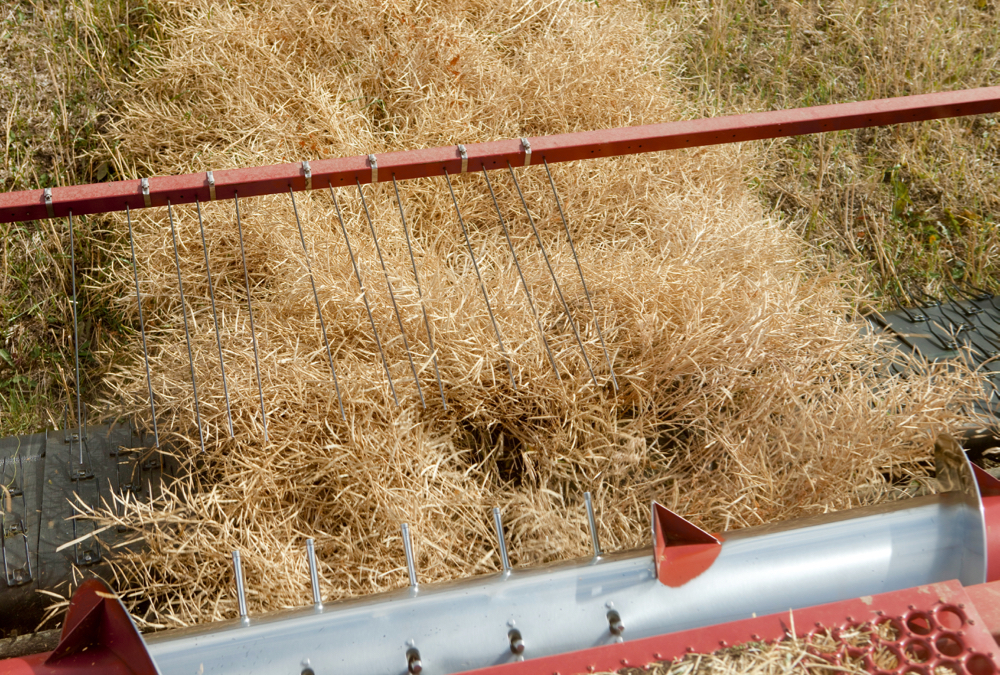
Alberta harvest wrapping up: report
Harvest operations advanced to 96 per cent complete in Alberta as of Oct. 7, with only a few late-seeded cereal and canola fields remaining, according to the latest provincial crop report.
Yield estimates for winter wheat ranged from 50 to 80 bushels per acre, while those for fall rye were 60 to 110. Early in the spring wheat harvest, yields were from 50 to 60 bu./ac., with quality ranging from 80 to 90 per cent good to excellent. Oat yields were 100 to 150 bu./ac., while barley was 60 to 70. Most corn was in the R4 and R5 stages.
Canola yields so far were 45 to 60 bu./ac. with swathing and desiccation ongoing. Flax was in the brown capsule stage and sunflowers were either in full flower or have completed flowering. However, blackbird damage to sunflower fields has led to the emergency registration of Avian Control, a bird repellent to be applied in fields up to the day of harvest. However, it can cause plant damage including leaf discolouration.
Portage la Prairie in the central region received the most rainfall during the week at 111.1 millimetres, with 98.5 mm falling between Aug. 20 and 21. On the flip side, Treherne, located in the same region, only saw 0.2 mm. Several areas in the southwest region received no precipitation at all.
Moisture conditions for the top 30 centimetres of soil varied wildly. Parts of the Interlake saw dry to very dry conditions, while areas within the northwest, southwest and central regions were rated optimal and very wet.
Field pea yields averaged 60 bu./ac., while dry beans were in the R7 and R8 stages and most soybeans were in the R5 and R6 stages.
Pastures were rebounding due to improved moisture conditions and producers were taking advantage by providing additional grazing days for livestock. Many producers also have hay and greenfeed, but rain has prevented them from being baled and quality is a concern. Second cut harvest yields for beef producers are below average, while dairies are going ahead with a third cut with yields stronger than the second. There were also average yields for slough hay and straw, as well as average to below-average yields for cereal greenfeed. Feed corn is starting to dent with silage harvest three weeks away.
Cattle on pasture were in good condition, but fly pressure was a concern with producers monitoring foot rot and pneumonia. Rains have replenished water sources in some areas, but others have remained dry. Some areas are also sourcing additional feed for the winter, while others are selling some of their surplus.


